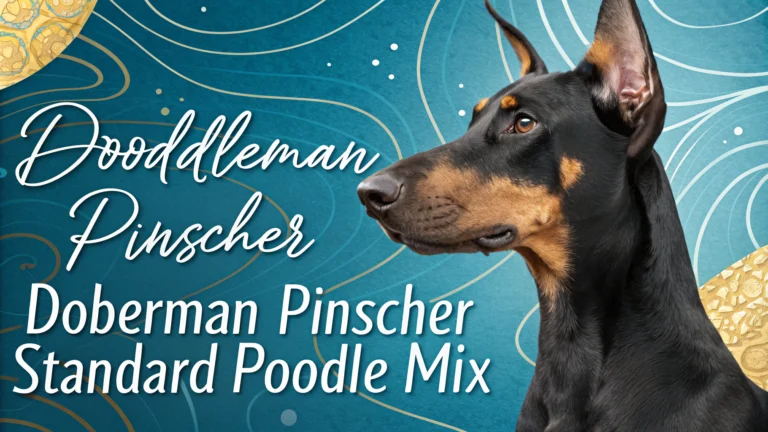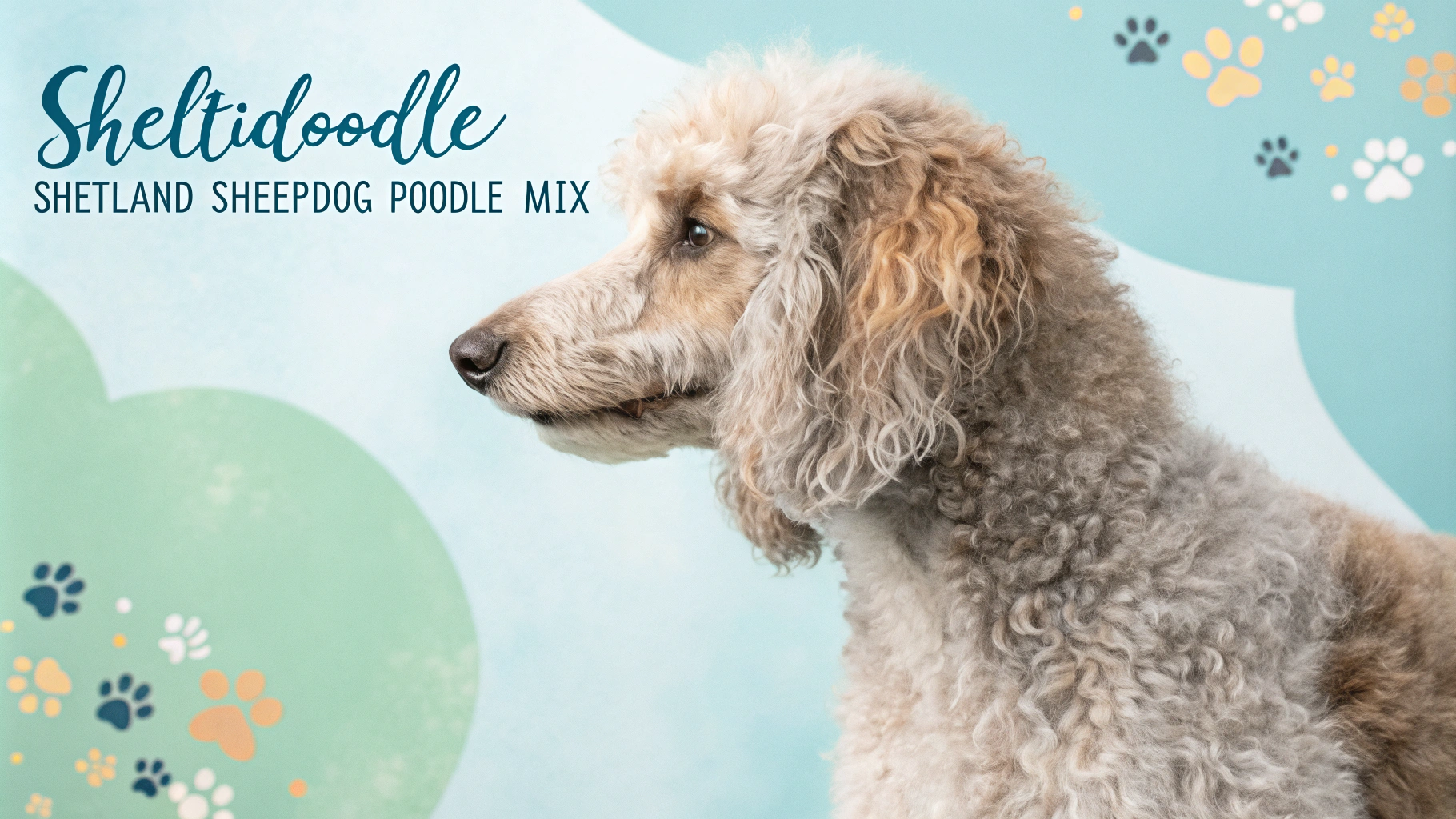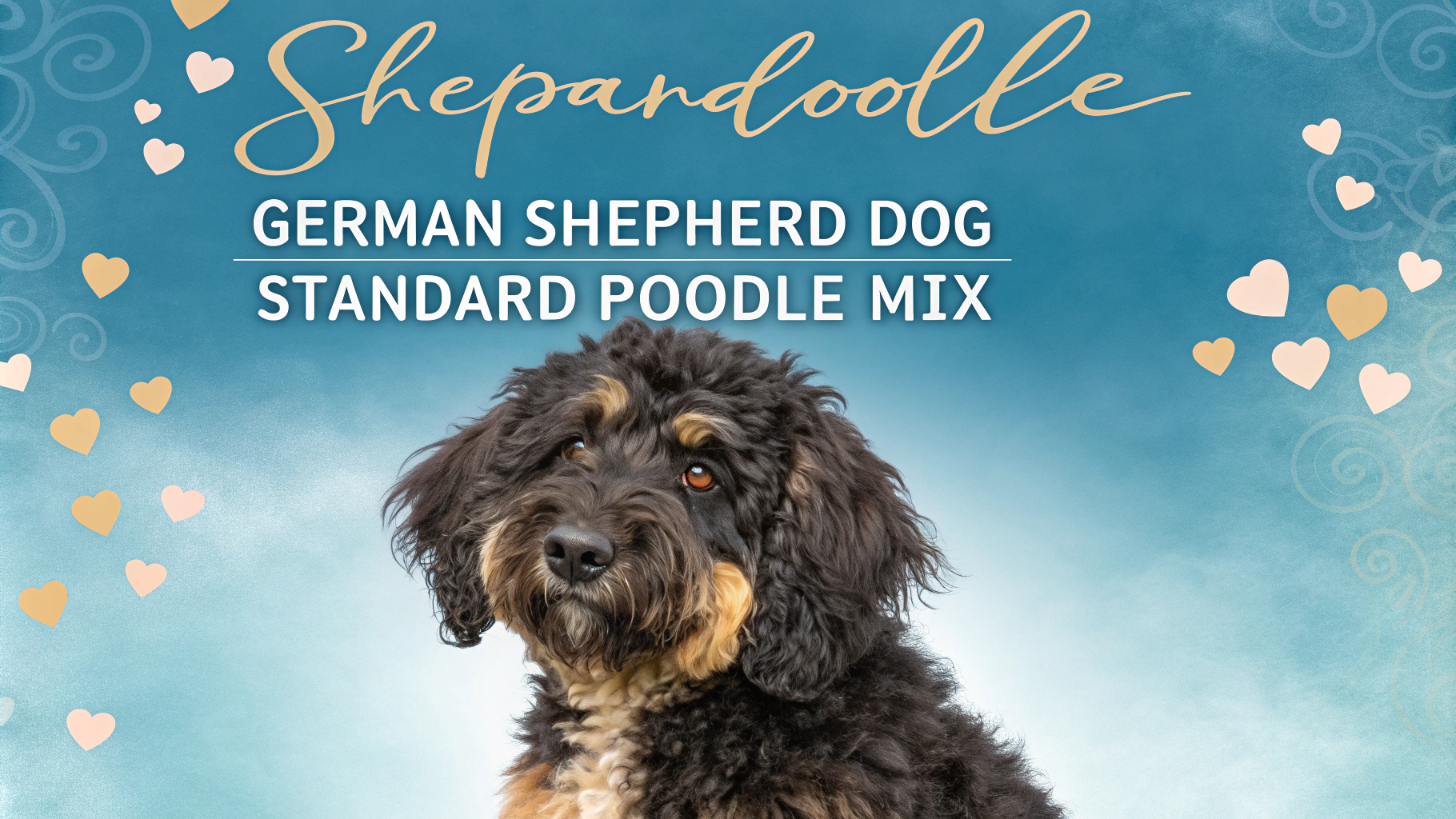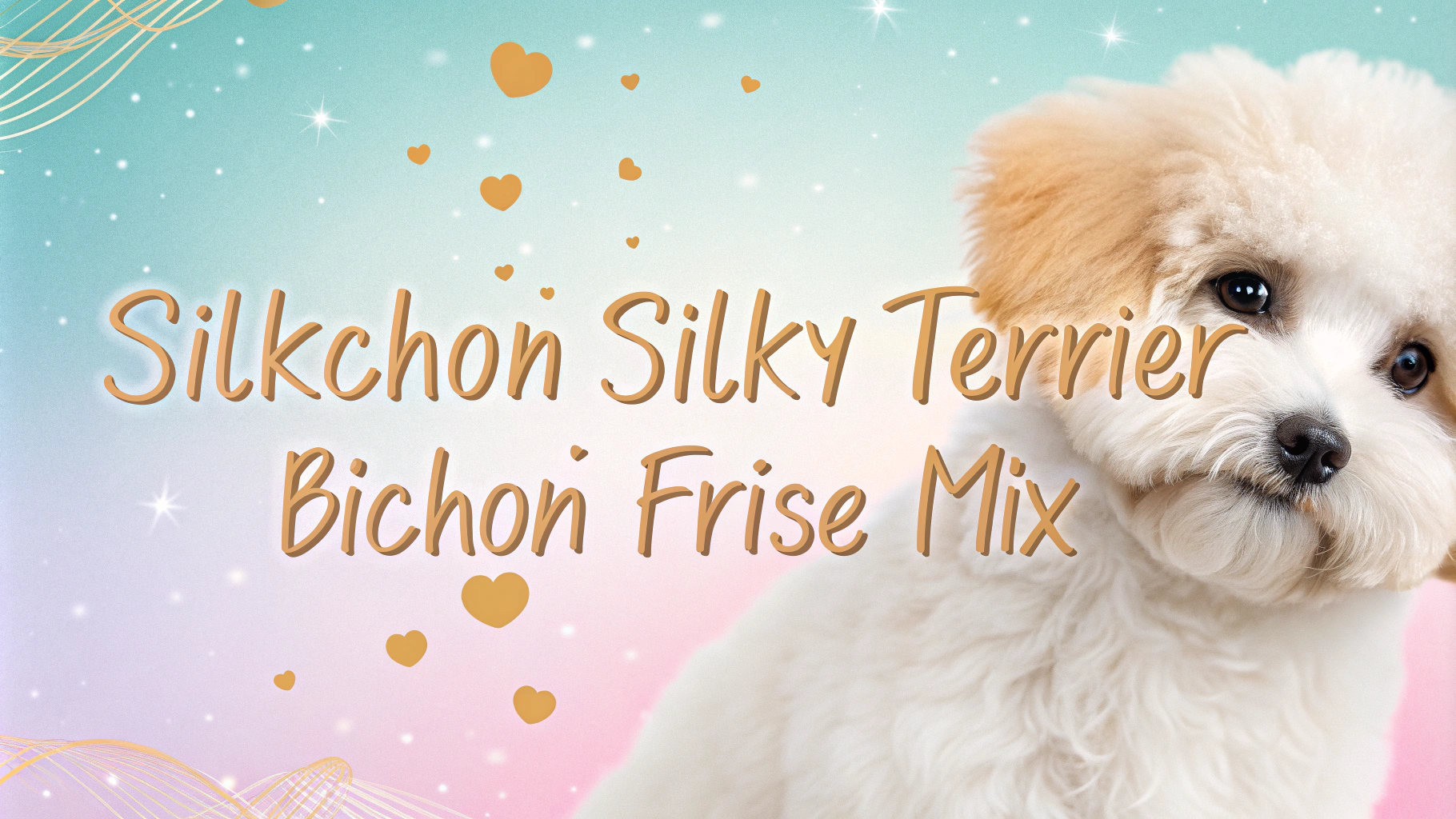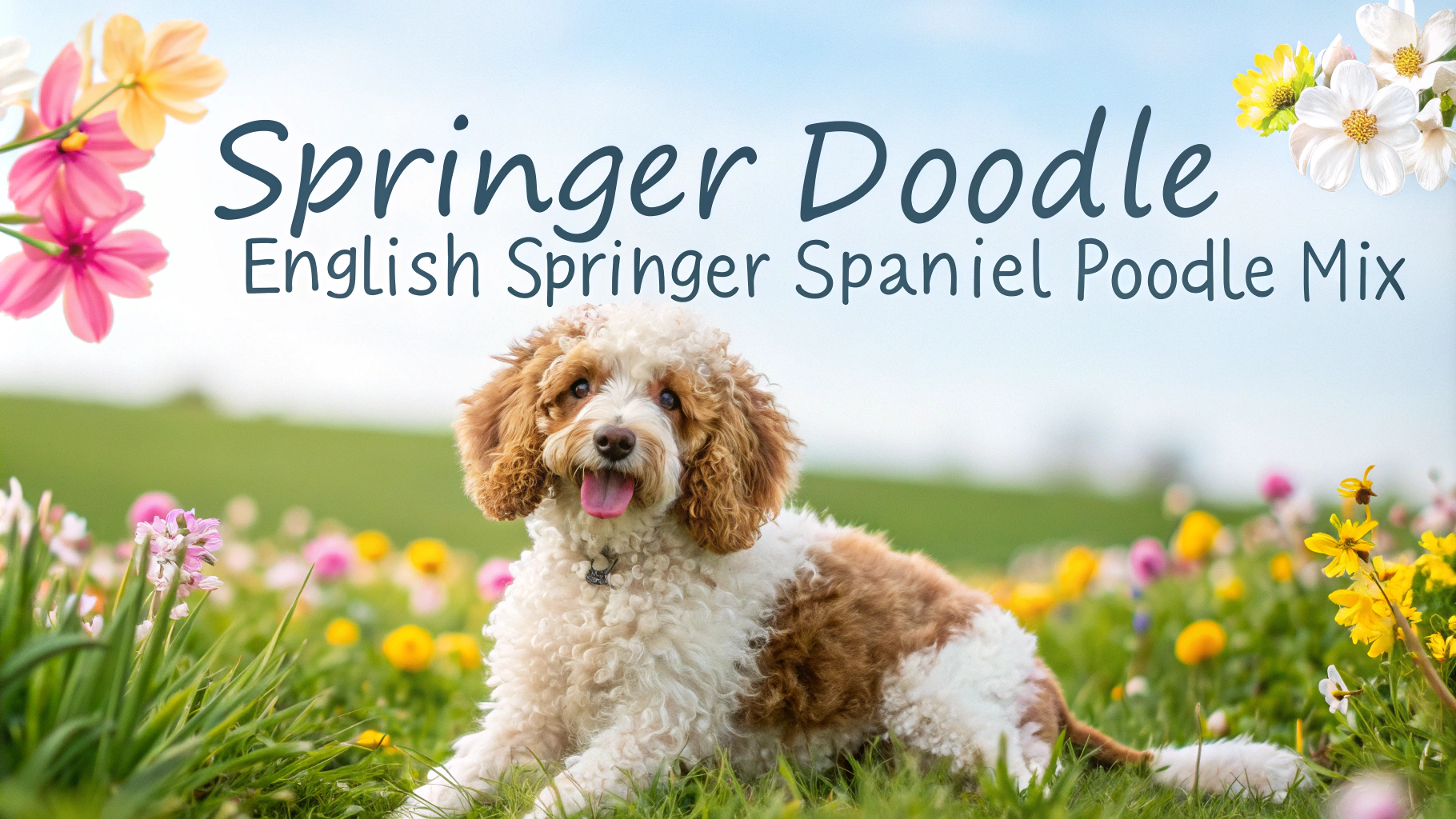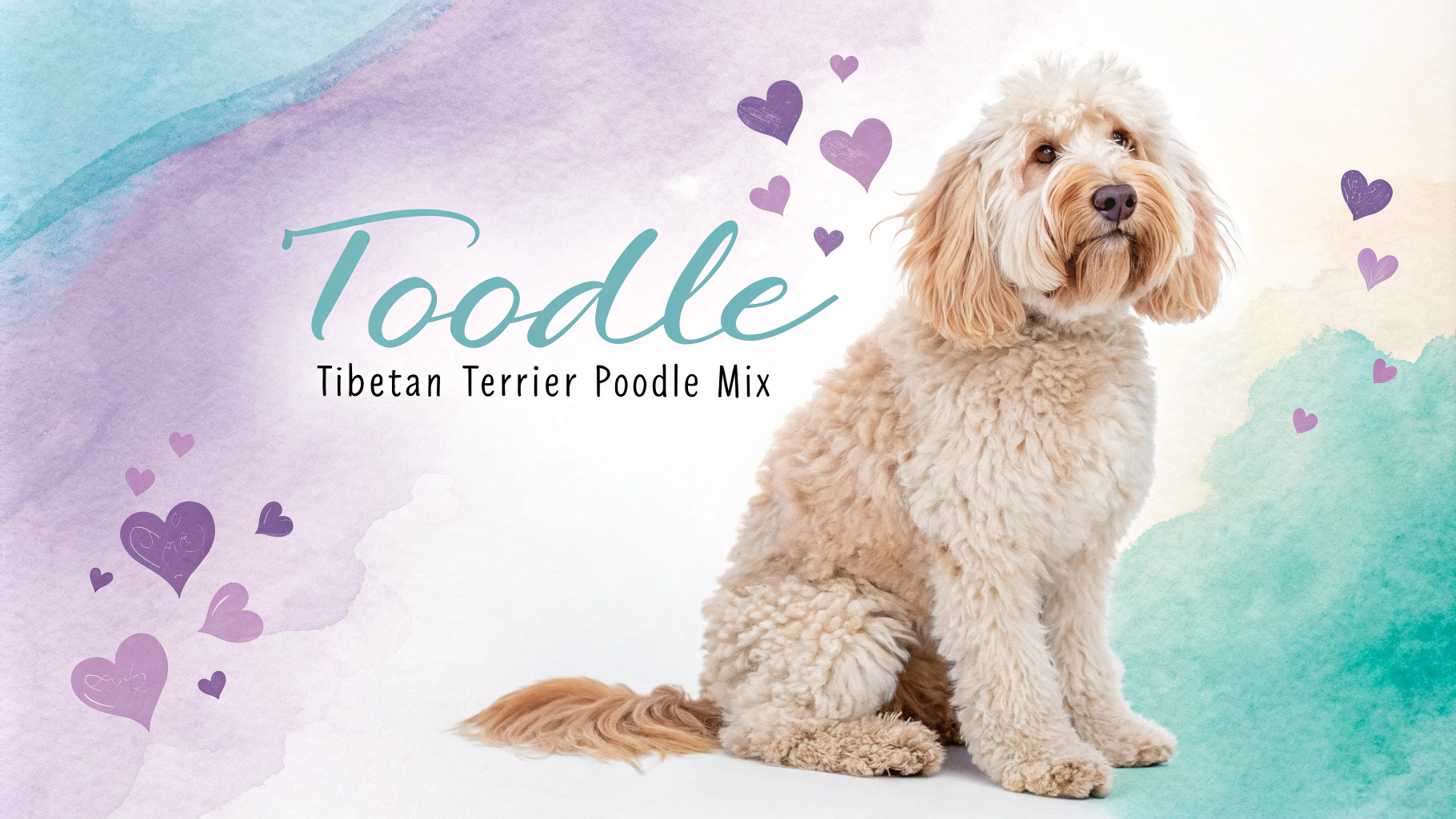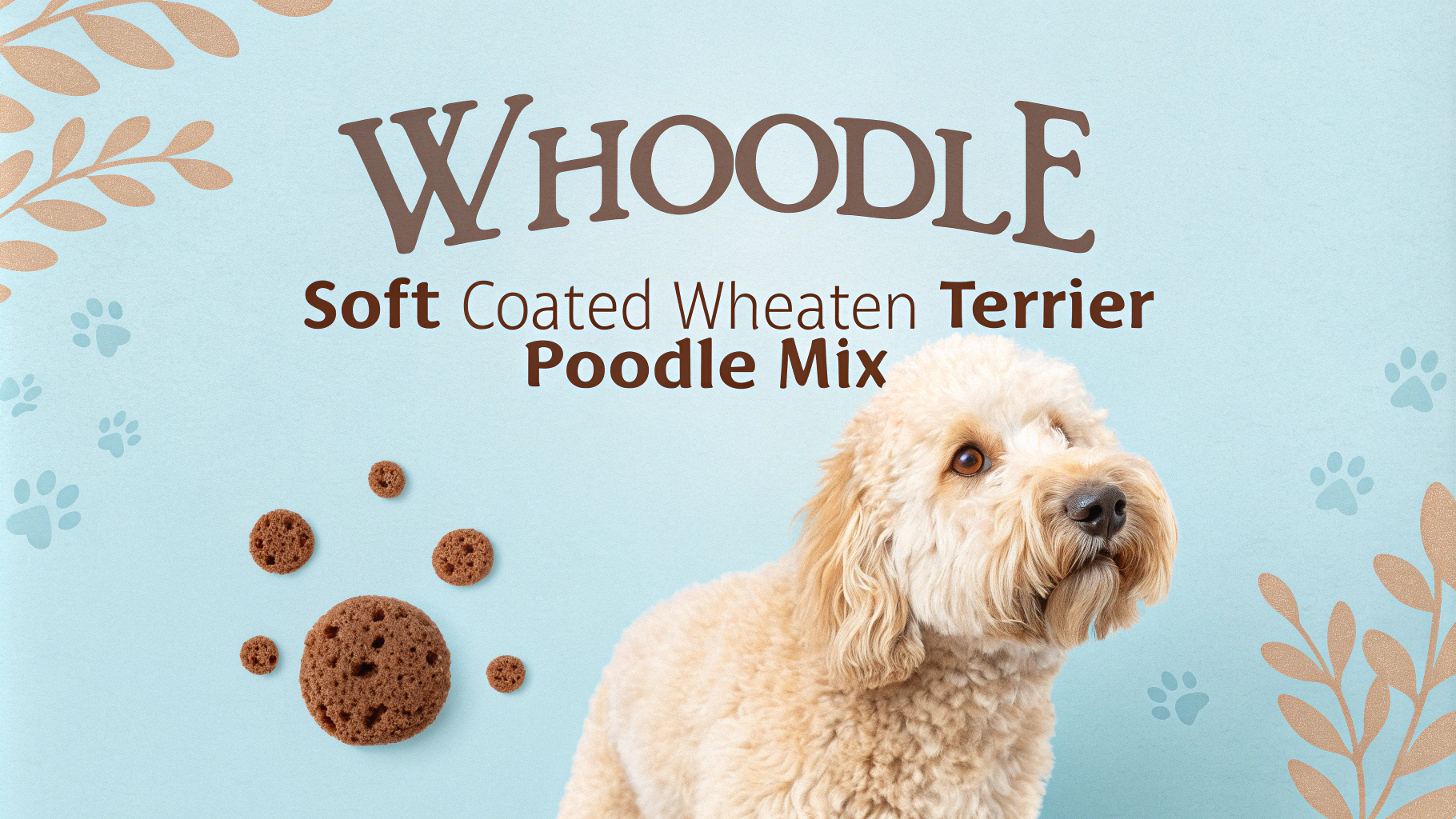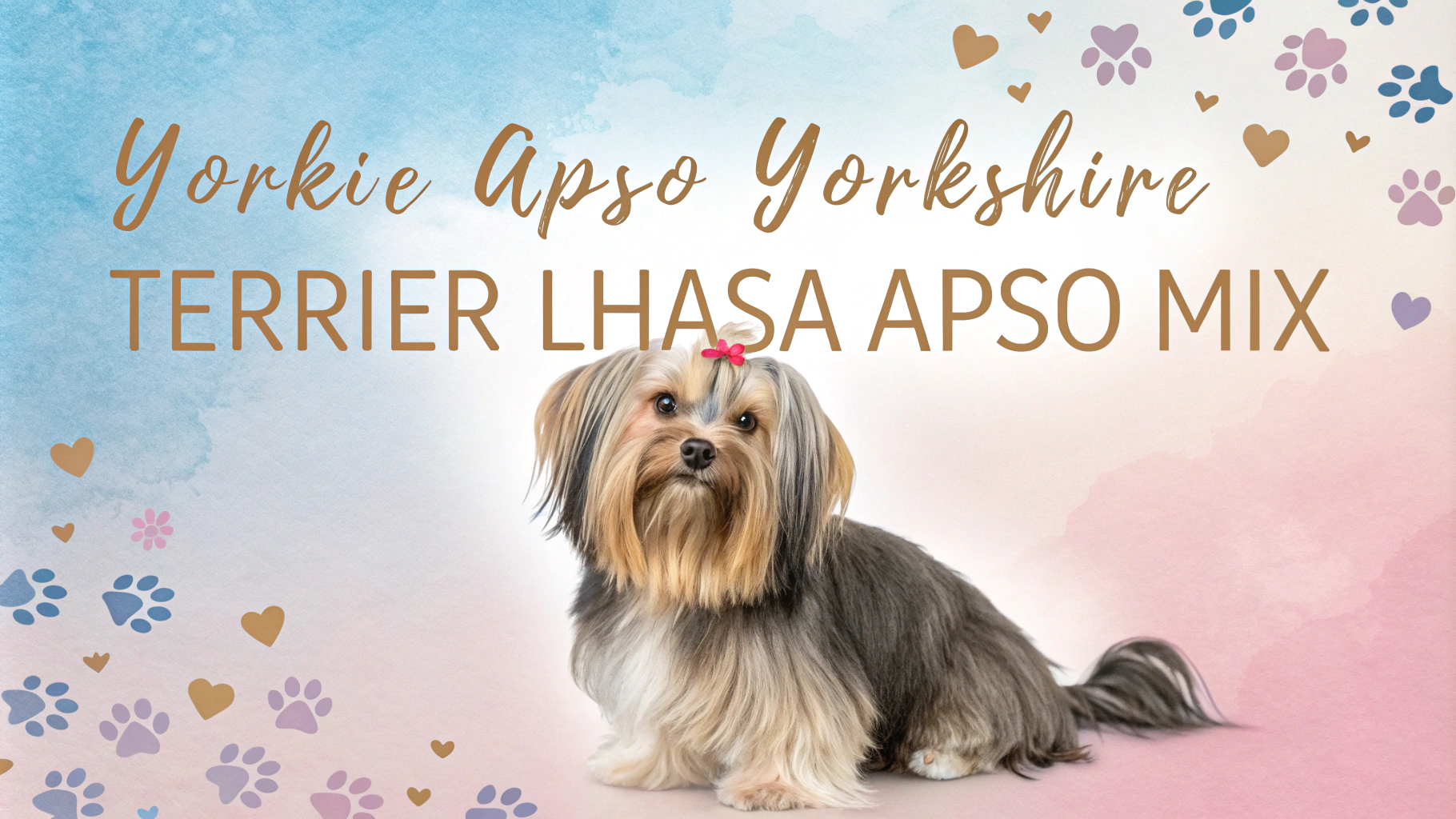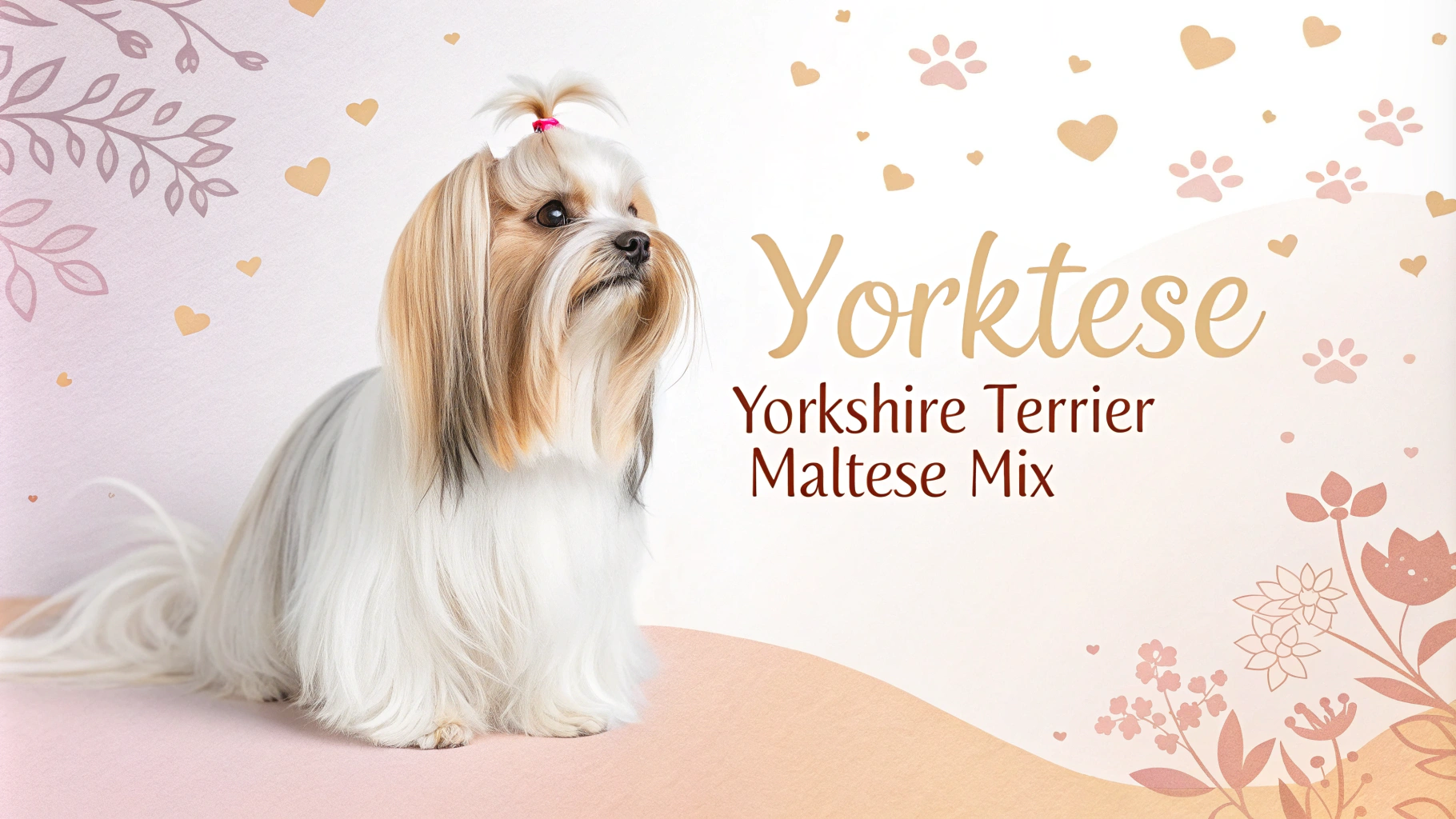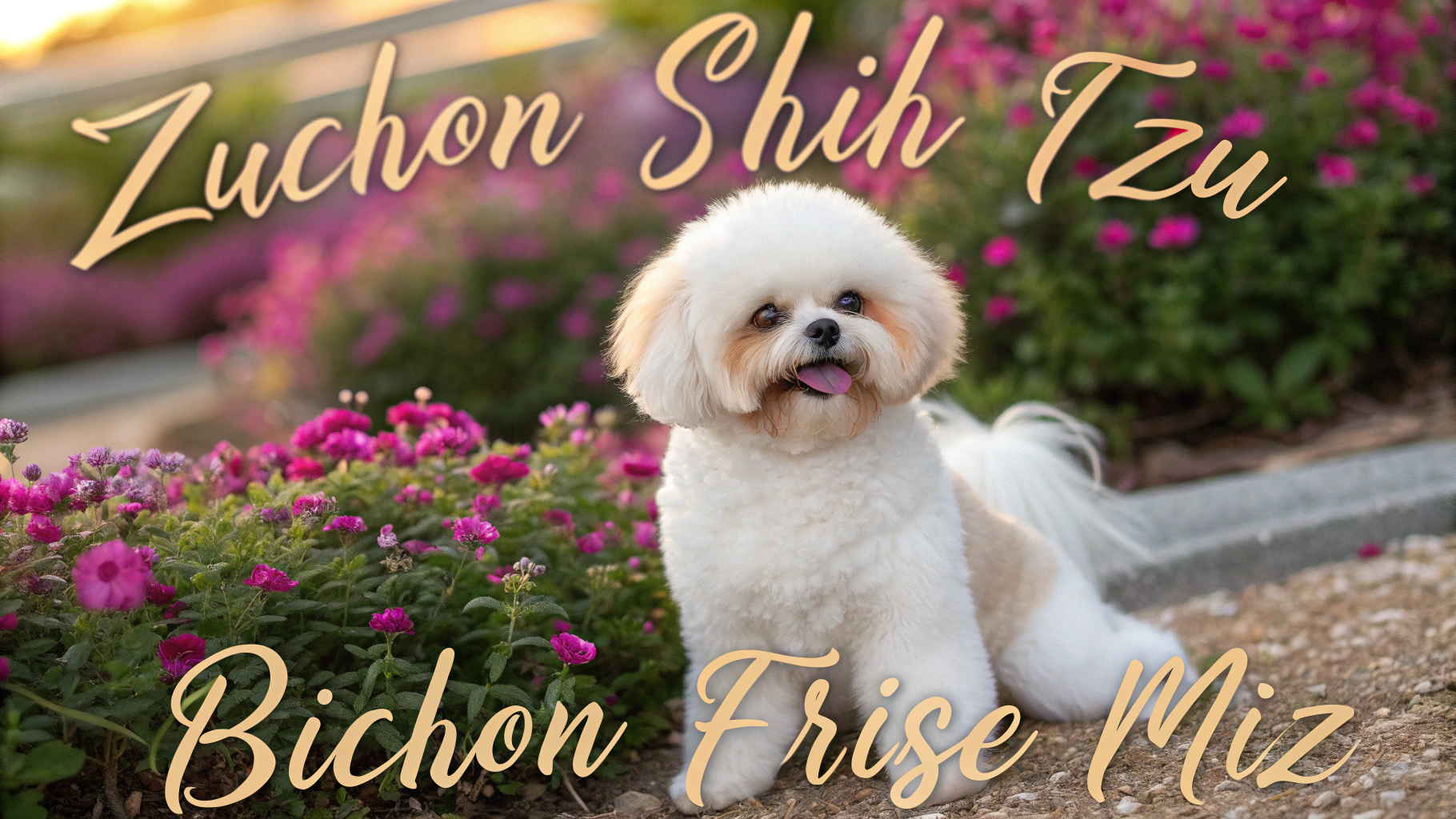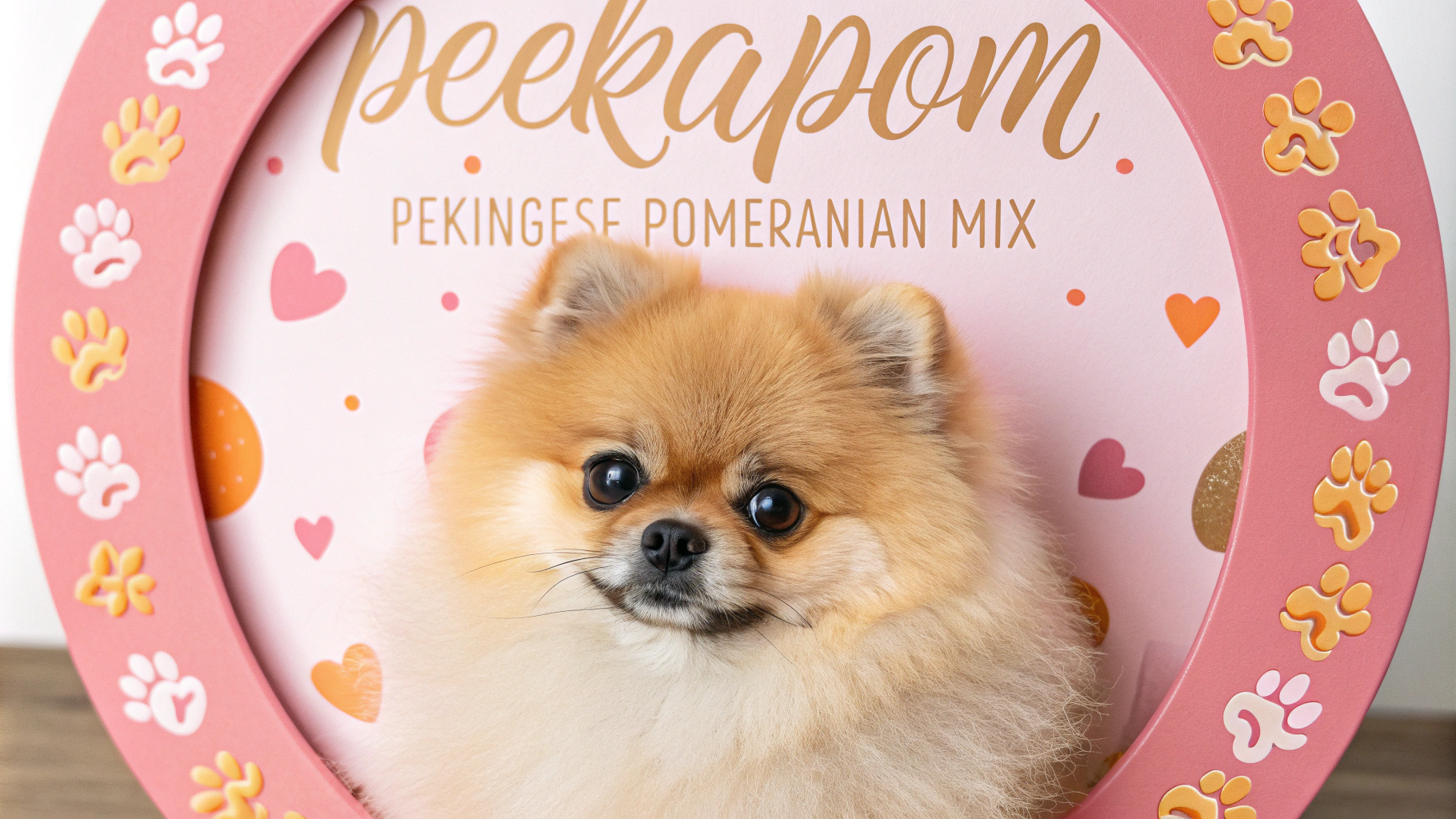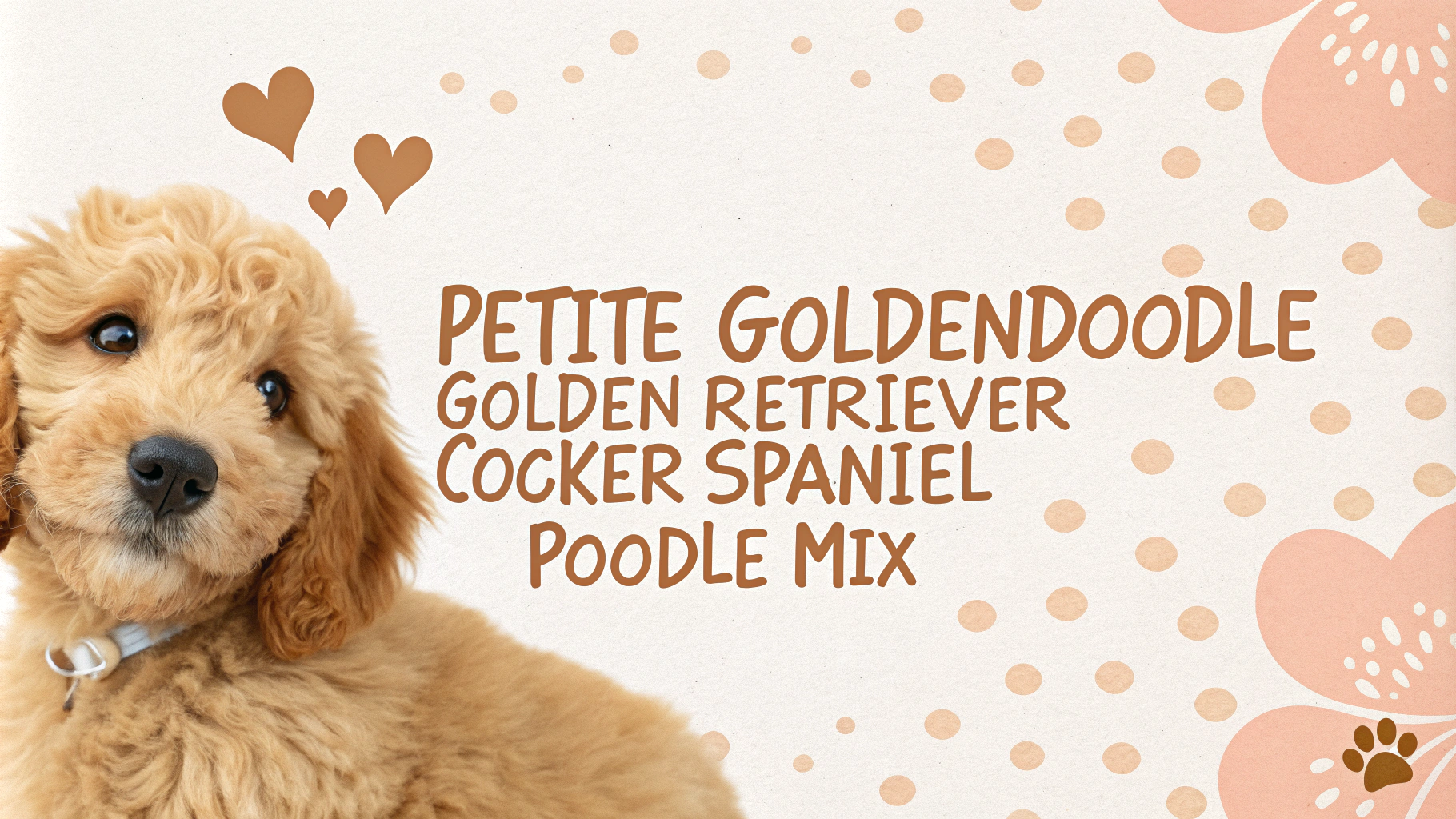The Doodleman Pinscher is a designer dog breed that combines the Doberman Pinscher and the Standard Poodle. This mix aims to blend the intelligence, loyalty, and protective nature of the Doberman with the hypoallergenic coat and playful personality of the Poodle. While not recognized by major kennel clubs, the Doodleman Pinscher has gained popularity among dog enthusiasts seeking a unique companion with diverse traits.
Key Facts
- Size: Large (22-28 inches tall, 50-90 pounds)
- Coat: Medium to long, wavy to curly, low-shedding
- Lifespan: 10-14 years
- Energy Level: High
- Intelligence: Very high
- Trainability: Excellent
- Good with Children: Yes, with proper socialization
- Good with Other Pets: Variable, depends on individual temperament
Character Traits
Doodleman Pinschers inherit a blend of personality traits from their parent breeds, resulting in a complex and dynamic character. These dogs are typically highly intelligent, combining the Doberman’s sharp mind with the Poodle’s problem-solving abilities. They are often alert and protective, making them excellent watchdogs, while also maintaining a playful and affectionate nature.
Loyalty is a defining characteristic of the Doodleman Pinscher. They form strong bonds with their families and can be quite devoted to their owners. This mix tends to be energetic and requires plenty of mental and physical stimulation to prevent boredom and potential destructive behaviors.
Socialization is crucial for Doodleman Pinschers, as they can inherit the Doberman’s tendency to be aloof with strangers. When properly socialized, they can be friendly and outgoing. These dogs often display a good balance between the Doberman’s confident, assertive nature and the Poodle’s more easy-going temperament.
Doodleman Pinschers are generally good with children, especially when raised with them from puppyhood. They can be patient and gentle, but due to their size and energy level, supervision is recommended with younger children. Their high intelligence makes them quick learners and eager to please, which can translate into a willingness to follow commands and participate in various activities with their family.
History & Origins
The Doodleman Pinscher is a relatively new mixed breed, likely originating within the last few decades as part of the designer dog trend. While the exact origins and the first breeder to intentionally cross a Doberman Pinscher with a Standard Poodle are not well-documented, this mix was likely created to combine desirable traits from both parent breeds.
The Doberman Pinscher, one of the parent breeds, was developed in the late 19th century by Karl Friedrich Louis Dobermann in Apolda, Germany. Dobermann, a tax collector, sought to create a medium-sized dog that could effectively protect him during his rounds. The resulting breed became known for its intelligence, loyalty, and protective instincts.
The Standard Poodle, the other parent breed, has a much longer history, with origins tracing back to Germany and France over 400 years ago. Initially bred as water retrievers, Poodles became popular for their intelligence, trainability, and hypoallergenic coats.
The creation of the Doodleman Pinscher likely aimed to combine the Doberman’s guarding instincts and loyalty with the Poodle’s non-shedding coat and friendly nature. As with many designer breeds, the goal was to produce a dog with the best qualities of both parent breeds while potentially minimizing some of the health issues associated with purebreds.
It’s important to note that as a mixed breed, the Doodleman Pinscher is not recognized by major kennel clubs like the American Kennel Club (AKC) or the United Kennel Club (UKC). However, they may be recognized by some designer breed registries. The breed continues to gain popularity among dog enthusiasts looking for a unique, intelligent, and potentially hypoallergenic companion.
Health Concerns
The Doodleman Pinscher, being a mix of Doberman Pinscher and Standard Poodle, may inherit health issues from both parent breeds. Common concerns include:
- Hip dysplasia
- Bloat (Gastric dilatation-volvulus)
- Von Willebrand’s disease
- Hypothyroidism
- Progressive retinal atrophy (PRA)
- Sebaceous adenitis
Regular veterinary check-ups, genetic testing, and maintaining a healthy lifestyle can help mitigate these risks. It’s important to obtain the dog from a reputable breeder who conducts health screenings on their breeding dogs.
Exercise Needs
Doodleman Pinschers are energetic and intelligent dogs that require substantial daily exercise. They typically need:
- At least 60-90 minutes of exercise per day
- A mix of physical activities and mental stimulation
- Opportunities for running, playing, and training
Activities such as long walks, jogging, fetch, agility training, and puzzle toys can help meet their exercise needs. Regular exercise is crucial for maintaining their physical and mental well-being, preventing destructive behaviors, and ensuring a happy, balanced dog.
Space Requirements
The Doodleman Pinscher is a medium to large-sized dog that adapts well to various living situations, but thrives with adequate space. Ideal living conditions include:
- A house with a securely fenced yard
- Access to outdoor areas for play and exercise
- Sufficient indoor space for movement and rest
While they can adapt to apartment living if provided with ample exercise, a larger living space is preferable. Regardless of the living situation, ensuring they have enough room to move around comfortably and access to regular outdoor activities is essential for their well-being.
Nutrition & Feeding
Proper nutrition is crucial for the health and longevity of a Doodleman Pinscher. Key considerations include:
- High-quality, balanced dog food appropriate for their age, size, and activity level
- Portion control to prevent obesity
- Feeding schedule of 2-3 meals per day
- Fresh water available at all times
Consult with a veterinarian to determine the best diet plan, as nutritional needs may vary based on the dog’s specific traits, health status, and lifestyle. Be cautious with treats and human food, as these can contribute to weight gain. Regular monitoring of their weight and adjusting their diet accordingly is important for maintaining optimal health.
Grooming Tips
The Doodleman Pinscher, being a mix of Doberman Pinscher and Standard Poodle, typically has a coat that is a blend of both parent breeds. This coat can range from slightly wavy to curly, and its grooming needs may vary depending on which parent breed’s coat is more dominant. Generally, these dogs require regular brushing, at least 2-3 times a week, to prevent matting and tangling, especially if they have inherited more of the Poodle’s coat texture.
Professional grooming every 6-8 weeks is recommended to maintain coat health and appearance. This may include:
- Bathing with a dog-specific shampoo
- Trimming or clipping the coat to a manageable length
- Cleaning and checking the ears regularly to prevent infections
- Nail trimming every 2-4 weeks or as needed
- Teeth brushing 2-3 times a week to maintain oral health
The Doodleman Pinscher may be less prone to shedding than a purebred Doberman, but they are not completely hypoallergenic. The amount of shedding can vary between individuals. During seasonal changes, they may require more frequent brushing to manage loose hair. It’s important to establish a grooming routine early in the dog’s life to ensure they become comfortable with the process.
Training Approach
Training a Doodleman Pinscher requires a balanced approach that takes into account the intelligence and working drive of both parent breeds. These dogs are typically highly intelligent, eager to please, and quick learners, traits inherited from both the Doberman Pinscher and the Standard Poodle. A positive reinforcement-based training method is most effective, using rewards such as treats, praise, and play to motivate the dog.
Key aspects of training a Doodleman Pinscher include:
- Early socialization: Expose the dog to various people, animals, and environments from a young age to ensure they develop into well-adjusted adults.
- Consistency: Establish clear rules and boundaries, and ensure all family members follow them consistently.
- Mental stimulation: Provide puzzle toys and training exercises that challenge their intellect, as both parent breeds are known for their mental acuity.
- Physical exercise: Incorporate training into daily exercise routines to keep the dog engaged and prevent boredom.
- Patience: While intelligent, they may have a stubborn streak, so patience and persistence are key in training sessions.
It’s important to start training early and maintain a consistent routine throughout the dog’s life. The Doodleman Pinscher may excel in various dog sports and activities, such as agility, obedience, and scent work, which can provide excellent opportunities for bonding and mental stimulation. Professional training classes can be beneficial, especially for first-time dog owners, to ensure proper techniques are used and to address any breed-specific training challenges that may arise.
